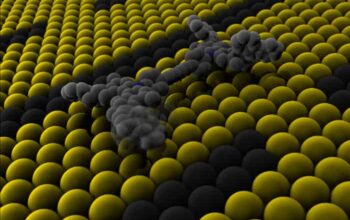In an epoch defined by rapid technological advancement, the term “cutting edge technology” has emerged as a beacon of innovation and progress. It refers to the most advanced and pioneering developments that promise to revolutionize industries and reshape societal norms. This idea transcends mere novelty; it represents a fundamental shift in understanding, a paradigm that compels us to reevaluate our relationship with technology. Exploring its dimensions provides valuable insight into present and future capabilities, fostering curiosity and engagement in the dialogue surrounding technological evolution.
Cutting edge technology encompasses a vast array of disciplines. From artificial intelligence (AI) and machine learning (ML) to biotechnology and nanotechnology, these advancements are not homogenous; each domain is replete with unique challenges and breakthroughs. AI stands at the forefront, driven by an exponential increase in computational power coupled with expansive datasets. This synergy fuels sophisticated algorithms that enhance decision-making processes, automate mundane tasks, and even create art. We are witnessing an extraordinary capability that was once relegated to the realm of science fiction.
These developments are not merely incremental improvements but are instead transformative innovations that hold the promise of altering industries. For instance, in the medical field, advanced machine learning models are being utilized to predict patient outcomes, revolutionizing personalized medicine. This evolution signifies a shift from reactive care to proactive interventions, fostering a more holistic approach to health.
Biotechnology, too, is on the precipice of monumental change. The advent of CRISPR technology—a revolutionary gene-editing tool—exemplifies how cutting edge technology can manipulate the very fabric of biology. With the promise of eradicating genetic disorders and optimizing crops for increased yield, CRISPR catalyzes profound ethical and moral discussions. The implications for biodiversity, food security, and human health invoke a myriad of questions that compel us to reconsider not only our technological trajectory but also the philosophical underpinnings of what it means to be human.
Moreover, the exploration of nanotechnology presents a tantalizing glimpse into a world where the manipulation of matter at the atomic and molecular scale could lead to unprecedented advancements. The potential applications are vast, ranging from drug delivery systems that target specific cells to the development of materials with unique properties. Understanding how these innovations could enhance energy efficiency or mend the environment adds layers of complexity to the conversation surrounding societal progress.
Alongside these advancements, ethical considerations burgeon. The allure of progress must contend with the moral responsibilities inherent in wielding such power. Dilemmas related to privacy, security, and equity emerge as pressing concerns in the wake of ubiquitous data collection and surveillance technologies. In this light, one must reflect—does the pursuit of knowledge absolve us from the repercussions that accompany such innovations? This dialectic compels stakeholders, including technologists, policy-makers, and the public, to engage in rigorous discourse around governance, accountability, and transparency.
Not to be overlooked is the role of education in this rapidly evolving landscape. As accessibility to cutting edge technology increases, it concomitantly necessitates a recalibration of educational paradigms. Preparing the next generation to navigate and innovate within this technological milieu requires interdisciplinary approaches that blend STEM (Science, Technology, Engineering, and Mathematics) with the humanities. By fostering creative and critical thinking, we enable individuals to not only master technologies but also understand their implications.
Sector-specific innovations illuminate the impact of cutting edge technology across diverse fields. In transportation, the rise of autonomous vehicles embodies a combination of AI, sensor technology, and connectivity. These vehicles not only promise enhanced efficiency but also raise questions about safety, liability, and urban planning. Will the advent of self-driving cars lead to a reimagining of urban landscapes? As we inch closer to realizing this reality, the ramifications extend far beyond the individual; society at large must adapt to new paradigms of mobility.
Similarly, advancements in renewable energy technologies reflect the urgency of addressing climate change. Innovations such as advanced solar cells and energy storage solutions not only advance sustainable practices but also offer candidates for debate about economic policies and environmental justice. The transition to a green economy holds the potential for revolutionizing not only energy production but also socioeconomic dynamics on a global scale.
In conclusion, cutting edge technology encapsulates a dynamic tapestry of innovation that extends far beyond the material world. It serves as a prism through which we can examine our ethical responsibilities, economic frameworks, and societal values. As we stand on this precipice of change, fostering curiosity and a critical mindset becomes paramount. The technologies that emerge will not solely define our future; rather, they will challenge us to engage more profoundly with the complexities of existence. The promise of a cutting edge world lies not just in spectacular advancements but also in our capacity for thoughtful reflection and responsible stewardship. Engaging with these technologies requires both vigilance and vision as we navigate the intricate landscape that lies ahead.










